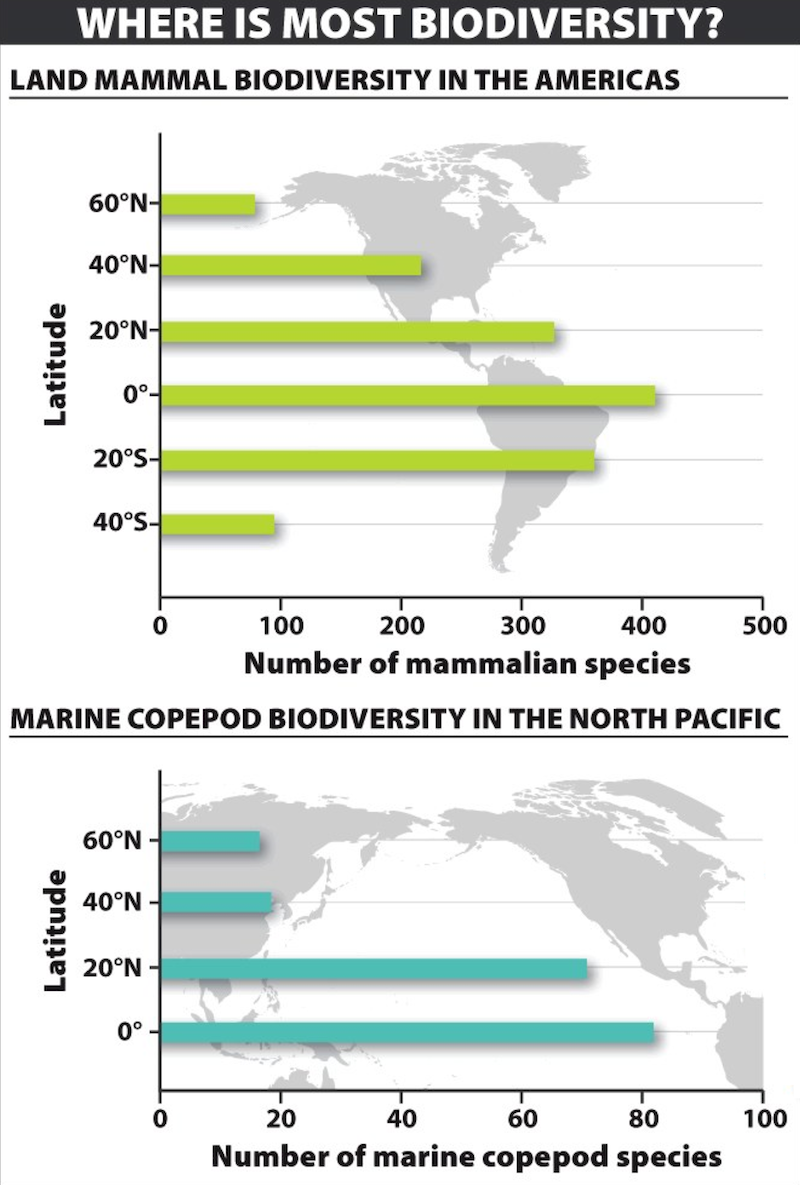
Chapter 16. Chapter 16 Graphic Content
Introduction

Instructions
Review the information provided in the graph to answer each question below.
After submitting your answer, you will be provided feedback to check if your response is correct.
(This activity contains 6 questions.)
1.

1. What are the axes for these graphs? What are the variables being observed?
2.

2. Which variable is independent? Which is dependent? Do these graphs conform to typical norms for the placement of the independent and dependent variables? Why or why not?
3.

3. At what latitude do the largest numbers of species occur?
4.

4. Why are data presented both for mammalian species and for marine copepod species (rather than just one or the other)? Why aren’t data for all species presented?
5.

5. At 20° north latitude, are there more mammalian or marine copepod species? What aspect of the graphs may be responsible for someone answering this question incorrectly?
6.

6. Bar graphs often have error bars, indicating some measure of variance in the data. Why do the data bars in these graphs have no such error bars?
Activity results are being submitted...